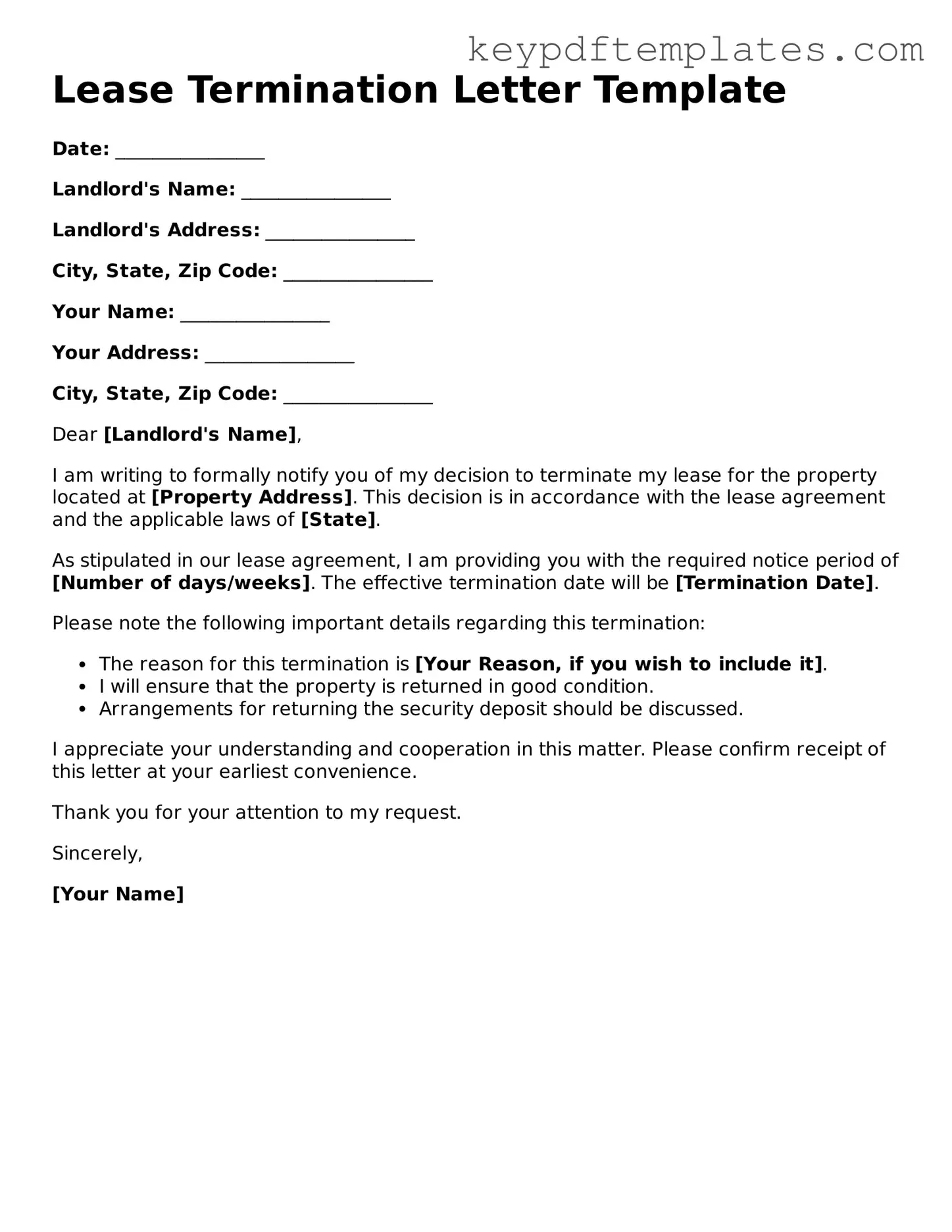Printable Lease Termination Letter Template
A Lease Termination Letter is a formal document used by a tenant or landlord to notify the other party of the intent to end a rental agreement. This letter outlines important details such as the effective date of termination and any necessary instructions for moving out. Understanding how to properly draft this letter is essential for ensuring a smooth transition for both parties involved.
Modify Document Online
